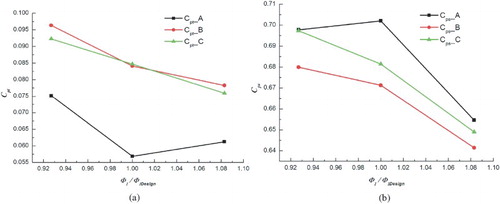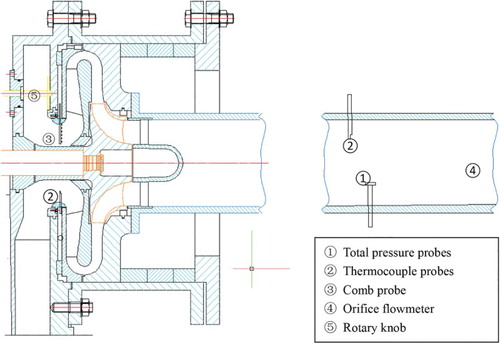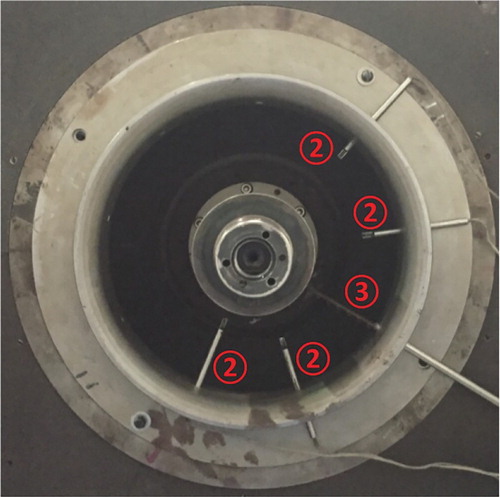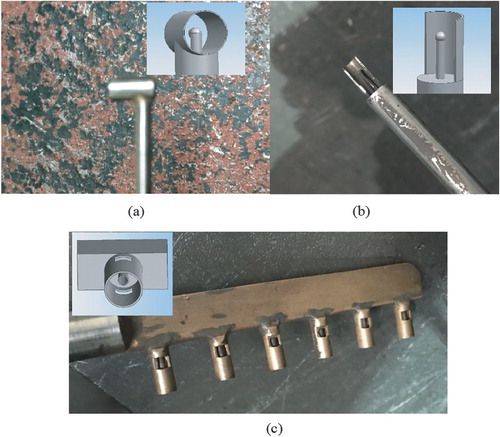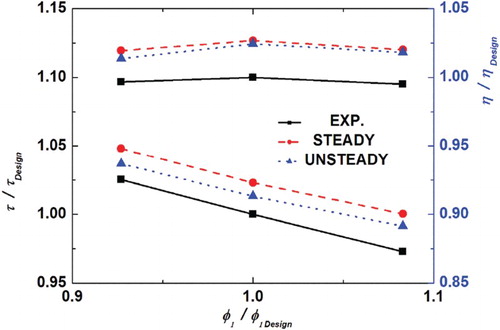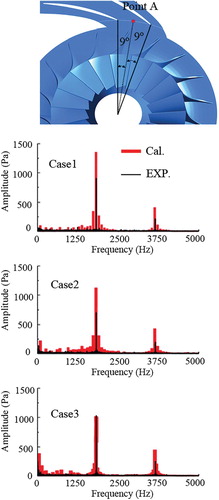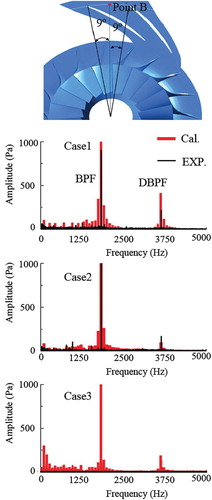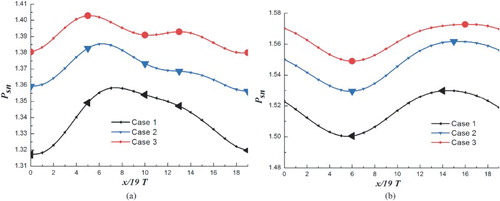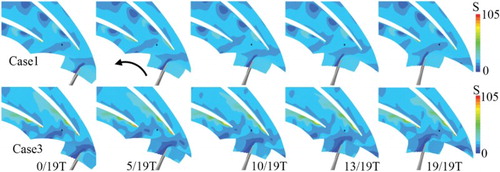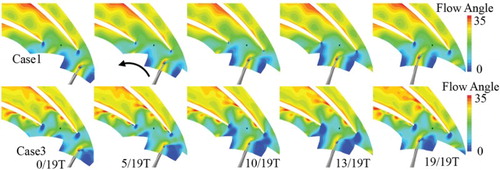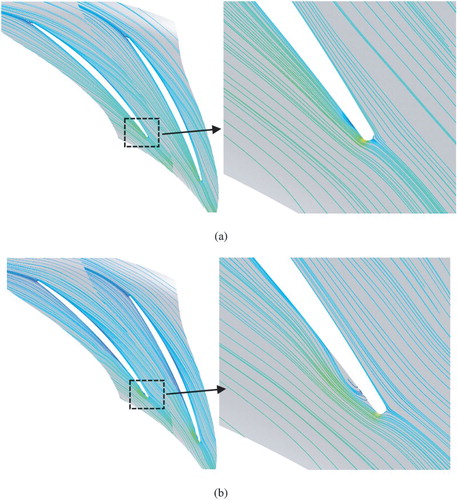Figures & data
Table 1. Primary geometric information of the centrifugal compressor.
Table 2. Domain grid node numbers.
Table 3. Relative errors of efficiency and head coefficient.
Figure 10. Distributions of PsN at 0/19T: (a) 95% span for Case 1, (b) 50% span for Case 1, (c) 5% span for Case 1, (d) 95% span for Case 3, (e) 50% span for Case 3, and (f) 5% span for Case 3.
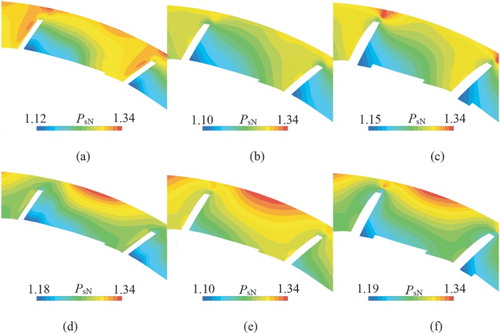
Figure 14. Vortex core regions within the diffuser passage for: (a) Case 1, (b) Case 2, and (c) Case 3.
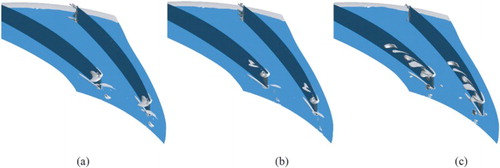
Figure 15. Case 3 at 95% span of diffuser inlet (R/R2 = 1.04): (a) pressure distribution and (b) flow angle distributions.
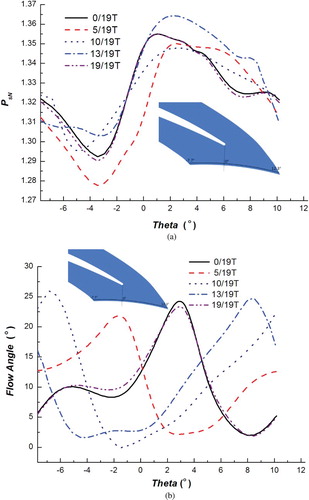
Figure 16. (a) total pressure loss coefficient Cpt of diffuser and (b) static pressure recovery coefficient Cps of diffuser.
